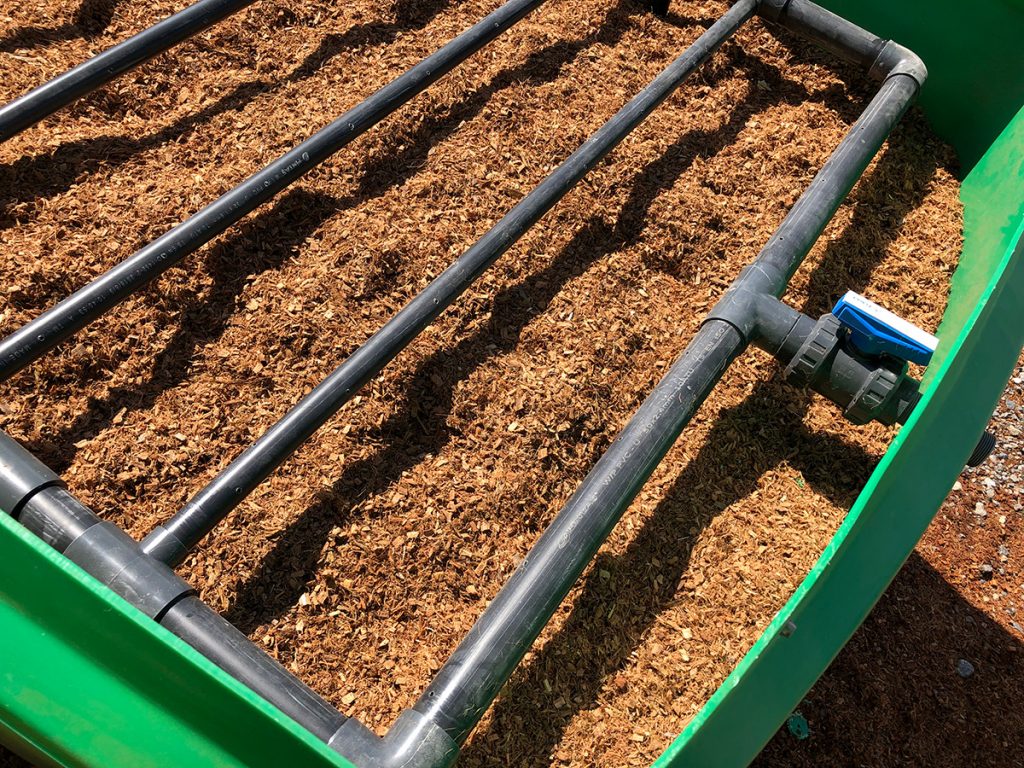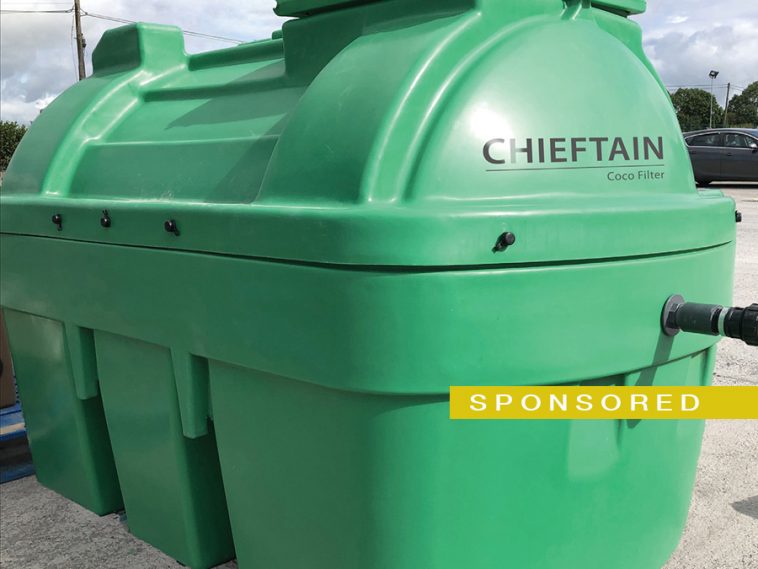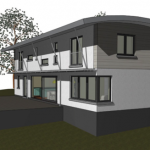When a sewage treatment system is required for your home build site, the option you choose depends on whether primary, secondary, or tertiary treatment levels are required. This is determined having had a percolation test and site assessment carried out.
Primary septic tank system
Septic tanks are used when site percolation is good— the Chieftain septic tank by Molloys consists of a concrete septic tank with two chambers, and is used alongside a percolation area (in the case of a septic tank, the percolation area is considered secondary treatment). The septic tank breaks down organic matter and separates floatable and gross solids from the wastewater. The effluent from the septic tank is then discharged (either by gravity or an adjacent pump station) into a series of perforated pipes on the site (the percolation area).
Secondary sewage treatment system (after a septic tank)
The objective of secondary treatment systems is the further treatment of the effluent from the primary stage and are used when site percolation is not optimal. The chieftain SBR (sequencing batch reactor) concrete sewage treatment system by Molloys has two chambers: a primary/buffer chamber and a reaction chamber. The
primary/buffer chamber is used to separate gross solids and fats oils and greases, and buffers shock loads. The reaction chamber treats sewage to the required standard using bacteria and oxygen. SBR technology achieves the required treatment standards and ensures low running costs in a multi-phase cycle, which is repeated four-times daily; fill, react, settle, and discharge. It is an ‘airlift’ system meaning it does not have any submersible pumps unless required by the discharge method. In this case, treated effluent is discharged to a trench soil polishing filter or pumped to a pressurised soil polishing filter.
Tertiary treatment options (after a sewage treatment system)
Tertiary treatment is used to treat wastewater to a higher quality without the requirement for a large soil polishing filter, and in the case where there is a high water table or bedrock is present at the site. For this type of treatment a sand, or coconut filter is used. A sand filter is constructed on site with several layers of graded sand. Whereas a Chieftain Coconut filter unit offered by Molloys, is an off-the-shelfdesign, packaged tertiary treatment system. Such a system is easy to install,
has a ready to go design, is compact, and available in multiple sizes.

This post is sponsored content and first appeared in the Winter 2020 edition of Selfbuild magazine.









